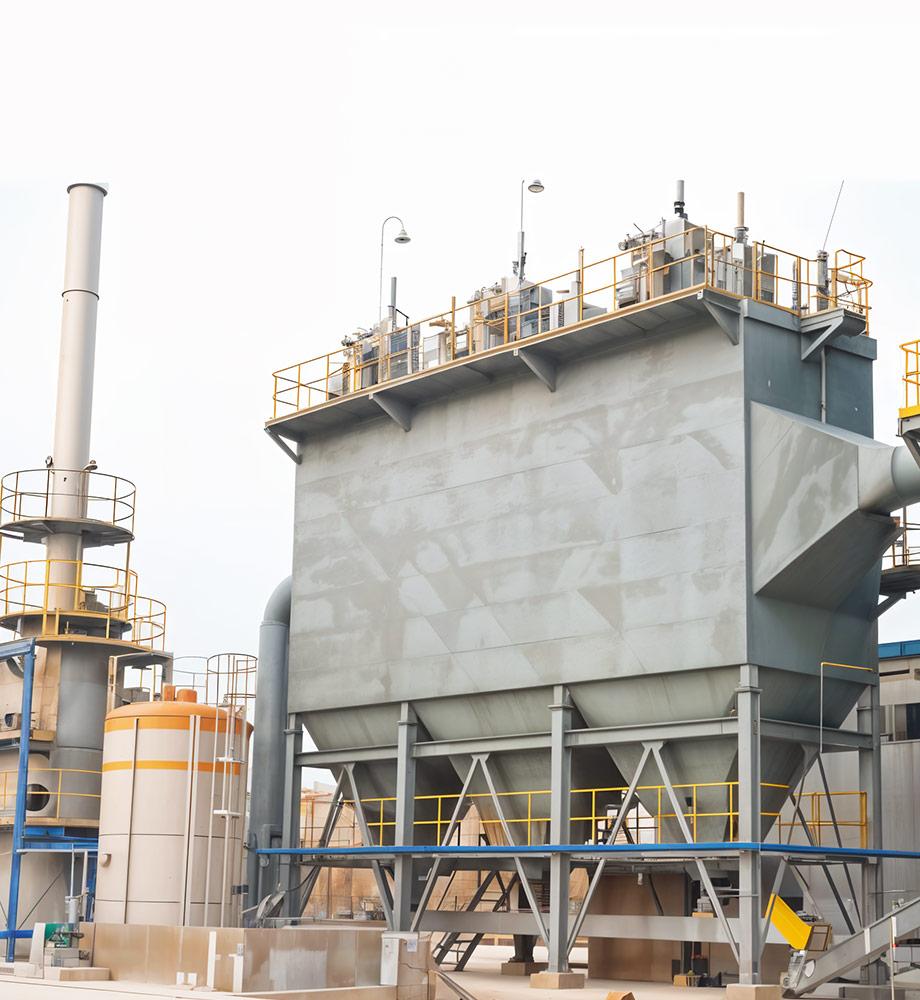Key Features
- FRP Casing: In wet ESPs, the enclosure is often FRP so it won’t rust from acidic water or flue gas condensate. The Spanish GEA manual notes that an ESP casing “can be made of FRP” for the needed vacuum pressure.
- Corrosion-Resistant Insulators: FRP is used to fabricate posts and support insulator assemblies that hold the charged plates.
- Smooth Flanges and Gaskets: All joints sealed with FRP flanges or rubber gaskets to keep high-voltage parts isolated from corrosive gas.
- Chemical Compatibility: Any part exposed to scrubber liquor or boiler washwater is FRP, preventing the rapid breakdown seen with metal plating.
Benefits
- Reliable, Watertight Performance: FRP ensures the ESP remains airtight under vacuum and does not leak electrolyte or gases.
- Long-Term Durability: Eliminates rust holes and scale that would otherwise create outages. This increases the uptime of large particulate control systems in power, cement and steel plants.
- Safety: Nonconductive FRP reduces hazard of electrical leakage. It also resists arc or spark erosion that might occur in a plate-out event.
Applications
FRP ESP components are used in industrial plants with acidic fly ash, corrosion-prone fumes, or wet scrubbers. Industries include coal-fired power (humid exhaust), waste incineration, and chemical plants (where hot, wet ESPs capture acid mists). FRP plates or frames are especially common in ESPs treating flue gas that contains sulfur or chlorides, as the composite withstands the chemical attack that wrecks metal collectors.
Technical Specifications
FRP ESP casings are engineered to handle typical design pressures (e.g. 4″ w.c. vacuum) and high humidity. The composite laminate schedule is chosen based on required mechanical loads and temperature (often up to 80–100°C for polyester systems). Insulator assemblies use FRP rods or tubes rated for high voltage.
Unique Selling Points
The use of FRP in ESPs is a major USP because it virtually eliminates one of the biggest ESP failure modes: corrosion of the casing. An FRP-cased wet ESP can maintain performance indefinitely under acidic spray conditions. Another USP is light-weight construction, which allows designers to use larger module spans and reduce internal support columns. Overall, FRP ESP components ensure that the pollution control equipment itself does not become an environmental hazard or a maintenance nightmare.

